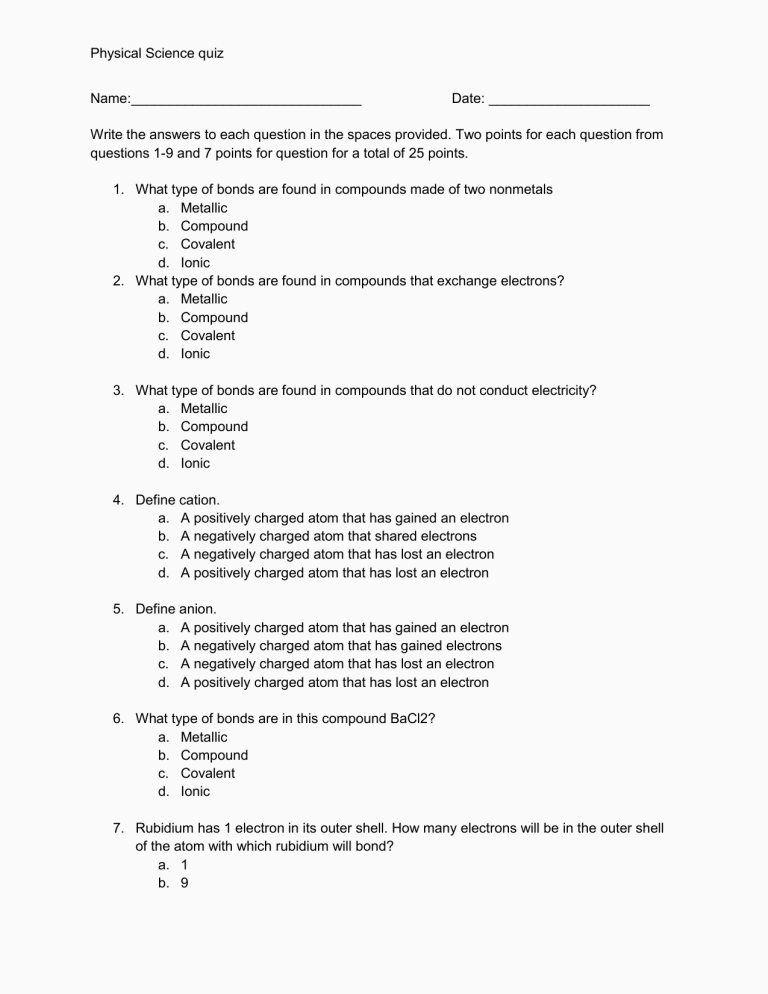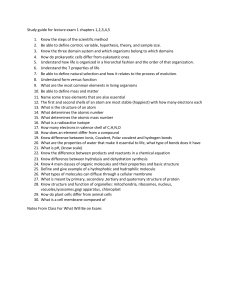
Physical Science quiz Name:______________________________ Date: _____________________ Write the answers to each question in the spaces provided. Two points for each question from questions 1-9 and 7 points for question for a total of 25 points. 1. What type of bonds are found in compounds made of two nonmetals a. Metallic b. Compound c. Covalent d. Ionic 2. What type of bonds are found in compounds that exchange electrons? a. Metallic b. Compound c. Covalent d. Ionic 3. What type of bonds are found in compounds that do not conduct electricity? a. Metallic b. Compound c. Covalent d. Ionic 4. Define cation. a. A positively charged atom that has gained an electron b. A negatively charged atom that shared electrons c. A negatively charged atom that has lost an electron d. A positively charged atom that has lost an electron 5. Define anion. a. A positively charged atom that has gained an electron b. A negatively charged atom that has gained electrons c. A negatively charged atom that has lost an electron d. A positively charged atom that has lost an electron 6. What type of bonds are in this compound BaCl2? a. Metallic b. Compound c. Covalent d. Ionic 7. Rubidium has 1 electron in its outer shell. How many electrons will be in the outer shell of the atom with which rubidium will bond? a. 1 b. 9 Physical Science quiz c. 7 d. 8 8. If calcium (Ca) has two electrons in its outer ring. What does it need to achieve a full outer shell? a. To gain 6 electrons b. To lose 8 electrons c. To lose 2 electrons d. To gain 2 electrons 9. What charge will a beryllium ion have when it bonds with oxygen? a. +1 b. -1 c. +2 d. -2 10. 7 points for this question. On the left side of the arrow, draw a Lewis dot structure for calcium (Ca) and Selenium (Se). Circle the electrons thy will be transferred during bonding and draw an arrow to show the movement of electrons. On the right-hand side of the arrow, draw the final compound with the resulting charges on each atom. Finally, name the type of bond that you’ve illustrated.



